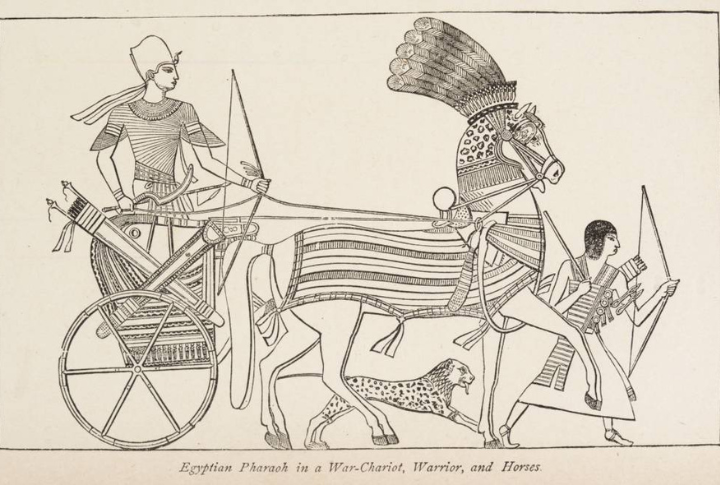
Archaeologists made a groundbreaking discovery in northern Sinai, where they found a secret hideaway of an ancient Egyptian pharaoh. This find, located in a 3,400-year-old royal palace in Tel Habwa, has archaeologists buzzing with excitement. Let’s dig into this remarkable discovery and what it tells us about one of Egypt’s most powerful rulers.
Unexpected Find

The Egyptian Archaeological Mission stumbled upon something extraordinary during a routine development project. Hidden within the ancient ruins of Tel Habwa, they found traces of a secret hideaway. The house featured two central halls supported by pillars, connecting various rooms. This discovery was a pharaoh’s private sanctuary.
Location, Location, Location

Tel Habwa, a temple complex in northern Sinai, wasn’t a random choice for this hideaway. Its strategic position near Egypt’s northeastern border made it a key site for defense. The pharaoh’s decision to build a secret space here speaks volumes about its importance. Furthermore, the area is regarded as a vital corridor linking Egypt with several regional locations.
The Pharaoh’s Identity

Early evidence suggests the secret hideaway belongs to the sixth pharaoh from the 18th dynasty. The wall hieroglyphs point to Thutmose III, who ruled Egypt between 1492 and 1479 BCE. Thutmose III fought to restore Egyptian authority over Syria and Palestine and established Egypt’s greatest dynasty. In 1426 BC, he passed away.
Architectural Marvel

The hideaway’s design speaks volumes of ancient Egyptian ingenuity. It was cleverly concealed within the larger palace structure and featured hidden entrances and escape routes. Its layout suggests it was built for secrecy and security, so it was the perfect residence for a warrior king like Thutmose III.
Purpose of the Hideaway

Archaeologists are debating the hideaway’s purpose. Was it a war room where Thutmose III planned his famous campaigns? Or perhaps a private retreat from the pressures of ruling an empire? Based on the design, archaeologists could tell it was more of a rest house for the ancient king.
The Pharaoh’s Legacy: Preserved in Gold

Golden artifacts, preserved in pristine condition, were found within the hideaway. These treasures include jewelry, ceremonial items, and statues crafted with incredible skill. From the discovery of these items, it is clear that Thutmose III was extraordinarily wealthy and advanced in ancient civilization’s craftsmanship.
Wall Paintings Tell a Story

The walls of the hideaway are adorned with vivid paintings. These aren’t just decorative—they depict scenes from Thutmose III’s life and reign. Battle scenes, religious rituals, and everyday palace life are all captured in stunning detail, providing a visual history of the era.
A Window into Royal Life

Among the grand artifacts, the hideaway offers a rare peek into the private world of an Egyptian pharaoh. Personal items found in space, like a royal seal and fragments of clothing, humanize this legendary figure.
Military Significance

Given Thutmose III’s reputation as a military leader, its location near Egypt’s border is telling. The Sinai desert served as a critical route for Egyptian forces. And so, Tel Habwa’s royal palace likely played a key role in housing the king and supporting troops during military expeditions.
Religious Aspects

The hideaway also contains religious elements, and a small shrine is seen in it. This proves the pharaoh maintained a connection to the gods even in his most private moments. It’s a powerful reminder of how deeply religion was woven into ancient Egyptian life, even at the highest levels.
Preservation Challenges

Protecting this fragile site is a top priority. The desert environment, while suitable for preservation, also poses risks. Archaeologists are working to stabilize the structure and protect the delicate wall paintings from further decay.
The Mystery of the Builders: Who Were They?

The skilled craftsmen who built this secret hideaway remain a puzzle. While we know it dates back to Thutmose III’s reign, details about the actual builders are scarce. Were they local artisans or specialists brought from the capital?
The Possibility of Records

While no library has been confirmed, the hideaway’s location in a royal palace may have contained important documents. Archaeologists are carefully examining the site for any traces of written records. If found, these could offer valuable insights into Thutmose III’s reign and the administration of ancient Egypt.
Historical Implications

The sanctuary is forcing historians to reconsider aspects of Thutmose III’s reign. It suggests a level of personal involvement in border security that wasn’t previously known. This could lead to new interpretations of his foreign policy and military campaigns.
A Legacy for the Ages

As the story of the pharaoh’s oasis unfolds, it’s clear that this hidden world will continue to captivate and amaze for centuries. It’s a legacy of a bygone era, evidence of human ingenuity, and a reminder of the mysteries still buried beneath the sands of time.


Comments
Loading…